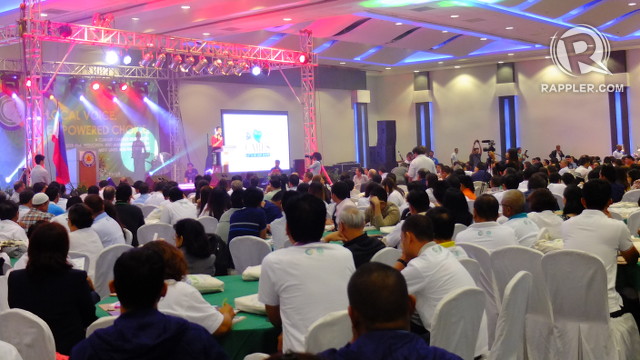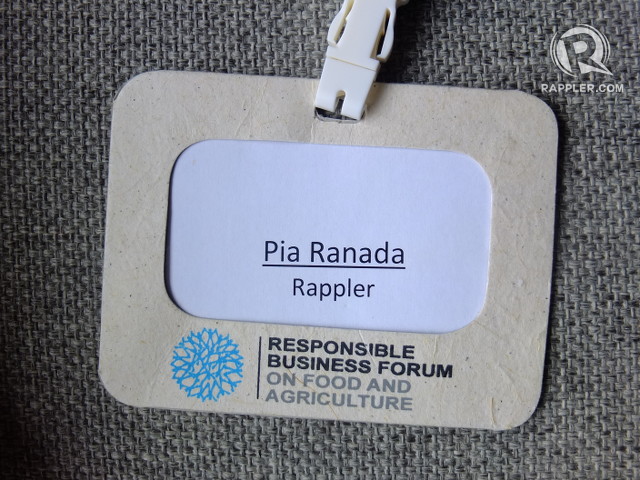SUMMARY
This is AI generated summarization, which may have errors. For context, always refer to the full article.
Being a reporter means I attend a handful of press conferences, fora, fairs, exhibits and summits – all of which aim to highlight specific issues and give you all kinds of information about various advocacies and projects.
Since I cover the environment and agriculture beat, a lot of these events focus on sustainable development and ways to save on resources.
Unfortunately, a lot of these conferences, many of them with hundreds of guests, are far from sustainable in terms of resources they use up.
I usually leave an event with a bag or envelope full of sheafs of papers, printed programs, brochures, folders and inserts. Once it’s time to sit down in front of my laptop and write my article, I greedily eat up all the information.
But after seeing the article published, I look around me and wonder what I’m going to do with all this printed matter.
Usually, I add them to the growing and increasingly unmanageable stock of B-side paper I can use for printing. But since I hardly print anything, the pile stays a pile.
I recycle the folders and use them to organize other important documents. But at a certain point, I know I’m going to have more than I need.
Every time I get to the media registration table and ready myself for another pack of paper, I think, is there really no better way to do this? With all the technology at our fingertips, is paper all that necessary for these kinds of events?
A major summit, conference or fair would typically have hundreds or even thousands of guests. Imagine all the paper printed just to keep all the participants on the same page.
Use of paper only encourages over-harvesting of trees in forests. Plastic, used for folders or packaging of event tokens, clog drainage, fill up landfills, end up in seas and rivers and endanger wildlife. (READ: Up to 88% of ocean surfaces sullied by plastic – study)
If we truly want to live up to the calls for sustainability and resource conservation that are usually heard at these events, why don’t we apply them to how the event is organized in the first place?
There is no excuse not to go paperless. Progressive offices have eliminated the use of paper through the use of team emails and Content Management Systems. Even government offices offer online services.
So much technology, no excuse
I recognize the importance of all the information I get from the sheets of paper and folders I get from the public relations arm of event organizers. I’m pretty sure all media professionals hold on to them as if they were lifelines because the accuracy and richness of their stories depend on the information inside.
But aren’t there paper-saving strategies we can use to provide all this data?
Allow me to make these suggestions:
1. Use email
Since members of the media are always asked to register their contact information before entering the event venue, public relations officers of the event can just send press releases, Powerpoint presentations, photos and video using the Internet.
2. Use Youtube
For heavy video files, some journalists would actually prefer to be sent a Youtube link to the uploaded video. This is true especially for online journalists who can embed the video in their article using a code generated by YouTube.
3. Use file-sharing websites
For a variety of files, organizers can use effective and well-recommended file-sharing websites like DropBox, MediaFire, 4Shared and Google Drive. These websites allow you to upload all sorts of files which can then be made accessible to anyone you send a generated link to.
4. Send the program at least a day ahead
A printed program or schedule of activities is a must in most big events to help guests see what’s in store for them and for journalists, specifically, to pick which activities they want to cover. They are usually part of the press kit.
But I think it’s enough to send the program at least a day before. Most journalists would have a camera or smart phone. What I do is take a screen grab of the program after opening it in my phone. This way, I have a handy copy of the program without the extra luggage.
The program can also be flashed on screens common at big events or displayed in a visible and central area in the events venue.
5. Make event websites extremely informational
What I don’t understand sometimes is how a major event can have a website so sparse in information and then give out stacks of paper during the event itself. Not only is this incredibly wasteful but also indicative of a poorly-organized event.
Event organizers should maximize the website by filling it with complete information about the event and speakers. All this information must be displayed in an organized way so that viewers are not overwhelmed but guided through step by step.
It should be easy for site visitors to find out what they need to know. Including a Frequently Asked Questions (FAQs) could help, or putting a landline or email address for people who still have questions. Of course, someone needs to be ready to promptly answer calls and reply to emails.
6. If you must use paper, use recycled paper
There are cases when printing something is simply unavoidable, as in the case of IDs. But some enlightened conferences I’ve attended print theirs on recycled paper and cardboard. This is a good departure from the typical plastic IDs inserted with paper.
7. Packaging matters
Many event organizers like to give little tokens of appreciation to guests and participants. Most of these are typically pens, mugs or notebooks.
If you really cannot do away with this, at least go for sustainable tokens wrapped in sustainable packaging like eco-friendly reusable bags made of recycled cotton or other recycled materials.
Instead of ending up in the trash can, guests can use them in the future when they shop in the grocery or go about their errands.
Small steps lead to big leaps
It may seem trivial to go into the nitty-gritty but covering environmental issues has shown me that most of the globe’s environmental catastrophes also start small.
It’s the aggregated usage of cars that run on fossil fuel that has ushered in the age of global warming. It’s the combined number of coastal households lacking proper toilets that has led to the deterioration of Manila Bay. It’s the collected plastic bags thrown by countless city-dwellers that clog our drains and cause flooding in the metro.
So it makes sense that solutions can also start small. If all event organizers, advocacy groups, companies and government agencies commit to paper-saving events, they could really make a difference in how much resources we waste.
In the case of organizers of events I cover, that’s what they preach anyway. Hundreds of thousands, sometimes millions, of pesos go into major events that promote sustainability, environment protection, climate resiliency and conservation.
How can you preach and not practice? The best way to convince others to live sustainably is if groups execute every aspect of their advocacy sustainably as well. – Rappler.com
Add a comment
How does this make you feel?


There are no comments yet. Add your comment to start the conversation.